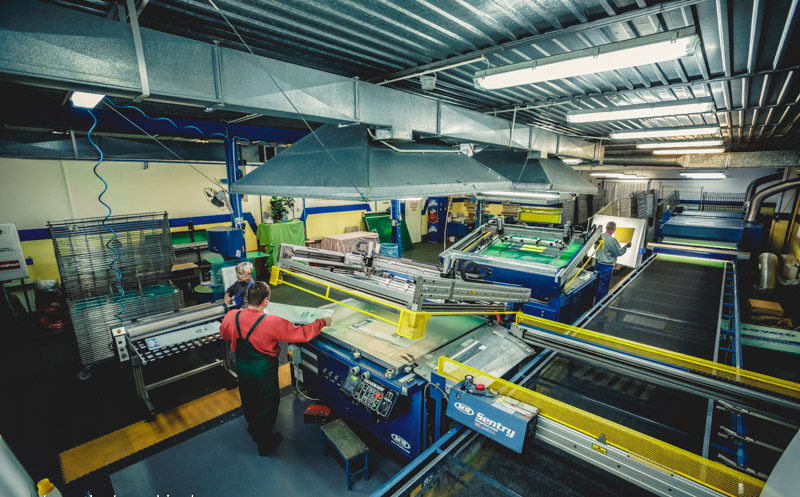
2020-09-11
SCREEN PRINTING VS. DIGITAL PRINTING – WHICH OPTION IS BETTER FOR YOU? PRACTICAL GUIDELINE.
Screen and digital
printing are two the most popular methods of printing. Working on the advertising projects, our
customers often consider: which method is better for them? Here, we come and provide them advice.
Now, I want to share with you some information about these two printing methods and the unique
benefits each has to offer.
What is screen printing and how does it work?
During screen printing process, the ink is pushed
through a screen to print a particular design on the desired material. The printer swipes ink across
the screen using a squeegee to pass the image through the screen onto the substrate. For each new
colour, a different screen is used.
What is digital printing and how does it
work?
Digital printing is a
much newer technique and involves the use of complex computing. In this process, an image is
analysed and then converted into a format that can then be printed directly onto the surface
required.
Color matching
If it comes to perfect color matching capability,
screen printing is a winner. Using the Pantone Matching System, we can duplicate any colour needed.
What is really important in making advertisement printouts, for screen printing we might also use
some special metallic paints – and get gold or silver colour on the printout. For the digital print
only the CMYK palette is used.
Matching colours accurately is
especially important when it comes to corporate branding. Many companies have brand guidelines that
specify Panteone colours. If you try to match these colours with CMYK – sometimes you might find it
really frustrating.
Details
For photorealistic printouts it is better to choose
digital print. When it comes to smooth transitions, digital printing allows the ink to overlap and
blend together much easier. If an image is photographic or has gradients (fades, blends), screen
printing will require halftones (tiny dots) and a lot of work.
Appearance
When it comes to printing huge surfaces in one colour
– the difference in these two printing methods shows up. Screen printouts look great; always has and
always will. Large single-colour surfaces with the paint applied evenly are possible to obtain only
in screen prints.
Durability
Durability is the problem that digital printing has
been struggling with since the beginning. With no doubt, if you want your printouts to be
long-lasting, you should choose screen printing. Thanks to the special ingredients of the paints and
thicker surface of the applied paint, screen printing doesn’t have to worry about the durability
problem.
Speed
Digital printing
do not require any complicated preparation. All the printer need is a digital image, which is then
printed directly on the surface. If you have a rush small project do not even hesitate to choose
digital printing. Screen printing needs time. Screens’ preparation is a laborious work. But once
it’s done – printing become faster. So, for large orders of repetitive prints – the screen printing
turns out to be better option.
Cost
As the digital printing do not involve multiple steps
for preparation – the printer simply needs the image, for small to medium size orders, it’s cheaper
option than traditional screen printing.
These two
printing methods have their own benefits. In brief, if you want each print to be personalized, the
digital print will suit your needs. On the other hand, when you have a large amount of the same
prints to make, especially with large surfaces to print in one colour, the screen printing is the
best option for you. There is another alternative. Thanks to many years of experience in printing
and having both technologies in-house, in our works we take advantage of these two methods, using
hybrid prints.
Reading time: 4,8 minutes
SHARE THIS:

Katarzyna Bogusz-Tryburska
Good design enthusiast. Perfecionist in her actions. Plant lover.
Good design enthusiast. Perfecionist in her actions. Plant lover.